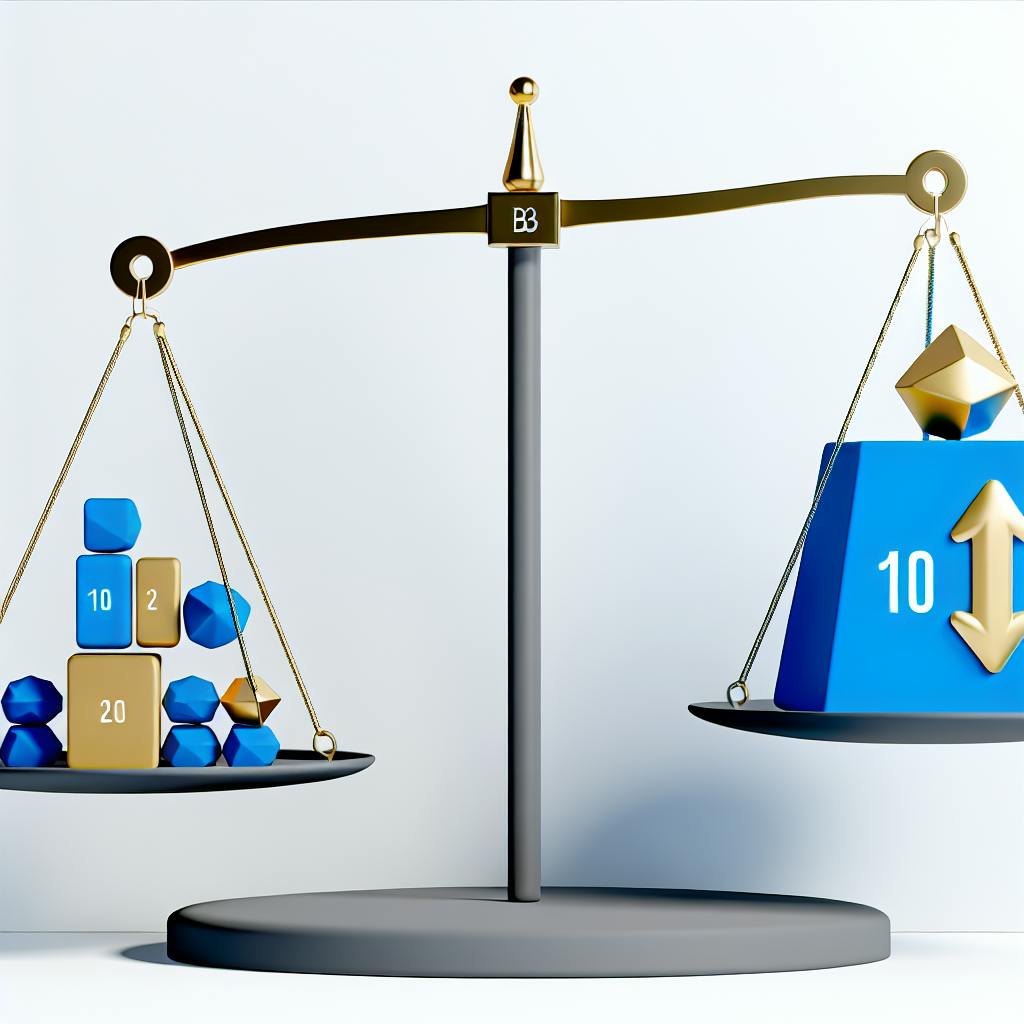Whistleblower channels are your secret weapon for tackling HR problems head-on. Here's the scoop:
- Catch issues early: Stop small problems from becoming big headaches
- Build trust: Show employees their voices matter
- Stay compliant: Avoid legal troubles and hefty fines
- Boost morale: Create a culture of transparency and accountability
Did you know? Companies without confidential reporting hotlines lose TWICE as much to fraud as those with anonymous channels.
Setting up an effective whistleblower system isn't rocket science. Here's what you need:
- Secure, anonymous reporting options
- Clear policies and procedures
- Proper data handling and privacy protection
- Regular training for all employees
- Integration with existing HR processes
The payoff? Companies with strong ethical cultures outperform others by about 40% across all business measures.
Ready to supercharge your HR risk management? Let's dive into how whistleblower channels can transform your workplace.
Related video from YouTube
Common HR Problems
HR teams are up against a whole host of issues that can throw a wrench in organizational stability and growth. Here are some of the biggest headaches they're dealing with:
Talent acquisition and retention: Finding and keeping top talent is a real struggle. The Manpower Group's 2024 Global Talent Shortage study found that a whopping 75% of employers are having a tough time filling roles. Talk about pressure on HR!
Employee engagement: While 71% of execs agree that engaged employees are crucial for success, keeping people motivated is an uphill battle – especially with so many working from home these days.
Diversity, equity, and inclusion (DEI): Job seekers are paying attention to diversity – 76% say it's a big factor when considering job offers. HR needs to step up and create environments where everyone feels welcome and valued.
Compliance and legal issues: HR teams are drowning in a sea of regulations. From new leave laws to pay transparency requirements, staying compliant is like trying to hit a moving target.
How Whistleblower Channels Work
Whistleblower channels give employees a safe way to report workplace issues without worrying about getting in trouble. Here's how they typically work:
1. Anonymous reporting options
Employees can raise concerns without revealing who they are. This encourages more people to speak up about sensitive stuff.
2. Multiple reporting channels
Companies offer different ways to report issues – phone hotlines, web portals, or mobile apps. This makes it easy for employees to use whatever method they're most comfortable with.
3. Secure data handling
Reports are processed and stored with top-notch security. This protects both the whistleblower and the company.
4. Timely investigation processes
When someone raises a concern, it gets looked into quickly. This shows employees that the company takes their issues seriously.
By setting up effective whistleblower channels, companies can:
- Catch HR problems early, before they blow up into major crises
- Build a culture where people trust each other and take responsibility
- Stay on the right side of the law and avoid regulatory headaches
- Boost employee morale and keep good people around longer
As NAVEX (a big player in risk and compliance management) puts it:
"A whistleblowing hotline can help an organization comply with its legal and regulatory responsibilities."
This really drives home how crucial these channels are for managing HR risks in today's business world.
Types of HR Risks
HR risks can hit companies hard, affecting both their wallet and their reputation. Let's break down the main types of HR risks and see what happens when companies drop the ball on HR compliance.
Common Risk Categories
HR risks usually fall into four main groups:
1. Workplace Compliance
This covers a lot of ground - from discrimination and harassment to safety issues and unfair labor practices.
For example: Bank of the West got slapped with a $650,000 fine in 2018. Why? A whistleblower spoke up about discrimination against female employees.
2. Financial Risks
Think payroll mistakes, misclassifying employees, and wage violations.
Here's a real-world example: A mid-sized manufacturing company ignored whistleblower complaints about safety issues. The result? Over $1 million down the drain in fines and legal fees.
3. Reputational Risks
HR mess-ups can seriously damage a company's image.
Take Boeing's case: In 2015, they faced a $2.5 billion penalty after a whistleblower raised safety concerns about the 737 MAX aircraft. That's the kind of PR disaster that gives executives nightmares.
4. Business Continuity Risks
This includes talent shortages, high turnover, and losing key staff.
The Manpower Group's 2024 Global Talent Shortage study found that 75% of employers are struggling to fill roles. That's a clear sign that finding and keeping talent is a major HR risk.
The Price of Poor HR Compliance
Ignoring HR issues isn't just bad practice - it's expensive. Here's what it can cost:
Financial Penalties: Whistleblower case settlements can range from thousands to millions. Small to mid-sized businesses might see $50,000 to $250,000 in settlements. For big corporations? We're talking $500,000 to $2 million or more.
Legal Fees: Even if you win, lawyer bills add up fast. Best Buy had to pay $1.5 million after being accused of retaliating against employees who raised concerns about corporate misconduct.
Lost Productivity: HR problems can tank employee morale and engagement. And remember, 71% of executives say engaged employees are key to success.
Reputation Damage: In today's world, news of HR failures spreads fast. This can make it hard to attract top talent, keep customers, and maintain partnerships.
Employee Turnover: Companies with weak HR practices often see more people quitting. On the flip side, firms with clear whistleblower policies often see up to 45% lower employee turnover.
But there's good news: Companies that take HR compliance seriously see real benefits. Those with strong whistleblower protection programs have 25% fewer workplace violations and 24% less misconduct.
As Susan Potter from Mercer puts it:
"The breadth and depth of intersecting risks organizations face today is staggering."
In other words: HR risks are everywhere, and they're no joke. But with the right approach, companies can protect themselves and their employees.
sbb-itb-d1a6c90
What Whistleblower Channels Offer
Whistleblower channels are more than just a corporate box to tick. They're powerful tools that help companies tackle HR risks head-on, build trust, and create a workplace where everyone's voice matters. Let's look at the real benefits these channels bring to the table.
Catching Problems Early
Think of whistleblower channels as an early warning system for workplace issues. They give employees a way to flag problems before they spiral out of control.
Take Vitkovice Steel, for example. After setting up an anonymous reporting channel, they saw a big shift in their workplace culture. At first, 70% of reports were anonymous. But over time, that dropped to just 30%. This shows that as employees got more comfortable with the system, they felt safer speaking up openly about issues.
Why is catching problems early such a big deal?
- It stops small issues from turning into major crises
- It saves money (fixing small problems is cheaper than cleaning up big messes)
- It protects the company's reputation by handling issues internally
Building Trust and Following Rules
Whistleblower channels do more than just catch bad behavior. They create an environment where everyone feels responsible for keeping the workplace healthy.
The Brno Municipal Office saw this firsthand. After introducing an anonymous whistleblowing platform, they uncovered instances of bullying by one individual. By taking quick action and removing the offender, they saw a clear boost in productivity. This shows how addressing issues promptly can impact the entire organization.
How do these channels build trust?
- They make employees feel valued by ensuring their concerns are heard
- They boost job satisfaction (people prefer working in places that value honesty)
- They show the company is serious about doing the right thing
Let's compare old-school reporting methods with modern whistleblower channels:
| Old Reporting Methods | Whistleblower Channels |
|---|---|
| Often not anonymous | Secure and anonymous |
| Can lead to fear of retaliation | Protect reporters from backlash |
| Limited availability | Available 24/7 through various platforms |
| Reports might be ignored | Ensure issues are logged and addressed |
| Can lead to external disclosures | Allow for internal resolution |
Lajos Antal, Head of Deloitte Central Europe's Cybersecurity Services business line, puts it well:
"Even the best managers can only make the right decisions if they have access to the right information at the right time – problems, situations, successes and failures alike."
This quote nails why whistleblower channels are so important. They make sure decision-makers know what's really going on in their organization – the good, the bad, and the ugly.
Key Parts of Good Whistleblower Systems
Creating an effective whistleblower system isn't just about checking boxes. It's about building a framework that protects both the company and its employees. Let's look at what makes these systems work.
Keeping Reports Private
Privacy is the backbone of any good whistleblower program. Without it, employees won't speak up. Here's how companies can keep things under wraps:
Secure reporting channels: Use encrypted online platforms or hotlines for anonymous reporting. Vitkovice Steel saw this in action. When they set up an anonymous channel, 70% of reports came in anonymously. But as trust grew, that number dropped to 30%.
Limited access: Only let a few people see report data. You might need a special team for this, separate from HR.
Clear communication: Tell people exactly who will see reports and what happens next. This builds trust. As NAVEX puts it:
"Even if you face a skeptical internal audience, positive intentions will be visible and will build trust."
Rules and Data Safety
You need solid procedures to handle reports effectively and securely.
Investigation protocols: Set clear steps for investigating reports:
- Who's in charge of the investigation
- How long each step should take
- How to document and act on findings
Data protection: With GDPR in mind, companies need to lock down their data:
- Store report data securely
- Do regular security checks
- Have clear rules on keeping and deleting data
Training: Everyone needs to know how whistleblowing works. A 2018 survey found that many Europeans don't report workplace issues because they think nothing will change. Regular training can fix this.
External audits: Bring in outside experts to check your whistleblower program. It adds credibility and helps you improve.
Setting Up Your System
Creating a whistleblower system isn't just about checking boxes. It's about building a framework that keeps your company and employees safe. Here's how to get your whistleblower channels up and running.
Making Rules and Teaching Staff
You need clear guidelines. Your whistleblower policy should spell out:
- What misconduct can be reported
- How to report issues (with and without names)
- What happens after someone reports
- How whistleblowers are kept safe from payback
But rules alone aren't enough. Everyone needs to know how to use the system. That's where training comes in.
Don't just do one training and call it a day. Keep whistleblower education going. Ethico suggests regular refresher courses to keep speaking up on everyone's mind.
Fitting with Current HR Work
Your whistleblower system can't exist in a bubble. It needs to work smoothly with your HR processes. Here's how to make that happen:
1. Assessment
Figure out how the whistleblower system fits with your current complaint procedures.
2. Integration
Connect new reporting channels with your HR software and databases.
3. Process Mapping
Create clear steps for how reports move from start to finish.
4. Role Definition
Decide who in HR handles different parts of whistleblower reports.
The goal? Make your HR work better, not more complicated. Matt Kelly, a compliance expert, puts it this way:
"For a whistleblower program to succeed, employees need to trust it."
That trust comes from seeing the system work well with HR processes they already know.
Using BizBot's HR Tools
BizBot's directory can be a game-changer when you're looking for whistleblower tools. They've got options for all kinds of companies, from one-person shops to big businesses.
Here's how to use BizBot's offerings:
- Figure out what you need. Do you want a simple hotline or a full-blown case management system?
- Compare features. Use BizBot's listings to see how different tools stack up.
- Check if it plays nice with others. Look for tools that connect easily with your HR software.
- Think about the future. Pick a solution that can grow as your company does.
With BizBot's directory, you can find a whistleblower tool that fits your needs without wasting time on endless Google searches.
Checking if it Works
You've set up your whistleblower system. But how do you know if it's doing its job? Let's look at how to measure success and review results to make sure your system is managing HR risks effectively.
Success Measures
To see if your whistleblower system is hitting the mark, you need to track some key numbers:
Report Volume and Frequency: More reports can be good. It often means employees trust the system. One tech company saw 30% more reports in six months after setting up a new hotline.
Time to Initial Response: How fast do you respond to reports? Try to reply to 90% within 24 hours. It shows you're taking concerns seriously.
Substantiation Rate: This is how many reports turn out to be valid. Aim for 40% or higher. If it's much lower, employees might need more training on what to report.
Anonymous vs. Non-Anonymous Reports: Lots of anonymous reports might mean people fear retaliation. In 2013, 60% of internal fraud tips were anonymous. If your numbers are similar or higher, you might need to look at your anti-retaliation policies.
Here's a quick comparison:
| Metric | Poor Performance | Good Performance |
|---|---|---|
| Time to Initial Response | < 50% within 24 hours | > 90% within 24 hours |
| Substantiation Rate | < 20% | > 40% |
| Anonymous Reports | > 80% | < 60% |
Results Review
Reviewing results isn't just about numbers. It's about understanding how the system impacts your ability to manage HR risks. Here's how to do it:
1. Analyze Report Categories
Look at what's being reported. See any patterns? If 70% of reports are about harassment, maybe it's time to update your anti-harassment training.
2. Measure Investigation Efficiency
How long does it take to close cases? Shivaram Rajgopal from Harvard Business Review says:
"If the board and senior management do not devote resources to investigating every complaint carefully, potential tipsters will be dissuaded from pointing out the next existential threat to the company."
Try to resolve most cases within 30-60 days. Taking longer? You might need more investigators.
3. Assess Impact on Company Culture
Ask employees what they think of the whistleblower system. Do they know about it? Do they trust it? One company found employee trust in management went up 25% over two years after starting a strong whistleblower program.
4. Review Policy Changes
How many policy changes came from whistleblower reports? This shows your system is making real improvements. A manufacturing firm found out through their whistleblower channel that safety rules were being ignored to meet deadlines. They overhauled their safety procedures, and workplace accidents dropped 40% the next year.
5. Monitor Retaliation Claims
Watch for claims of retaliation against whistleblowers. Even a few can really hurt trust in your system. If you see more of these, act fast and retrain managers.
Conclusion
Whistleblower channels aren't just a box to tick. They're a game-changer for creating a safer, more ethical workplace. By setting up these systems, companies can nip HR problems in the bud, build trust, and create a culture where everyone's accountable.
Let's recap how whistleblower channels can shake up the way organizations handle HR risks:
Whistleblower systems are like an early warning system. They help companies spot and fix issues before they blow up. Take Vitkovice Steel, for example. After they set up their system, anonymous reports dropped from 70% to 30%. That's a clear sign that employees were feeling more comfortable speaking up.
Here's a shocker: companies without confidential reporting hotlines lose TWICE as much money to fraud as those with anonymous channels. That's straight from the Association of Certified Fraud Examiners.
With new rules like the EU Whistleblowing Directive, companies NEED these systems now. But it's not just about following rules. It's about aiming higher when it comes to doing the right thing.
Want to know something cool? Companies with strong ethical cultures outperform others by about 40% across ALL business measures. And guess what? A solid whistleblower program is a big part of building that culture.
Speed matters too. Organizations with good whistleblower programs catch fraud in about 12 months. Without them? It takes 18 months. That's half a year of extra damage.
Bottom line: Whistleblower channels aren't just good ethics. They're good business. As Lajos Antal from Deloitte puts it:
"Even the best managers can only make the right decisions if they have access to the right information at the right time – problems, situations, successes and failures alike."
So, if you're not on board with whistleblower channels yet, it's time to get moving. Your company's future might just depend on it.


